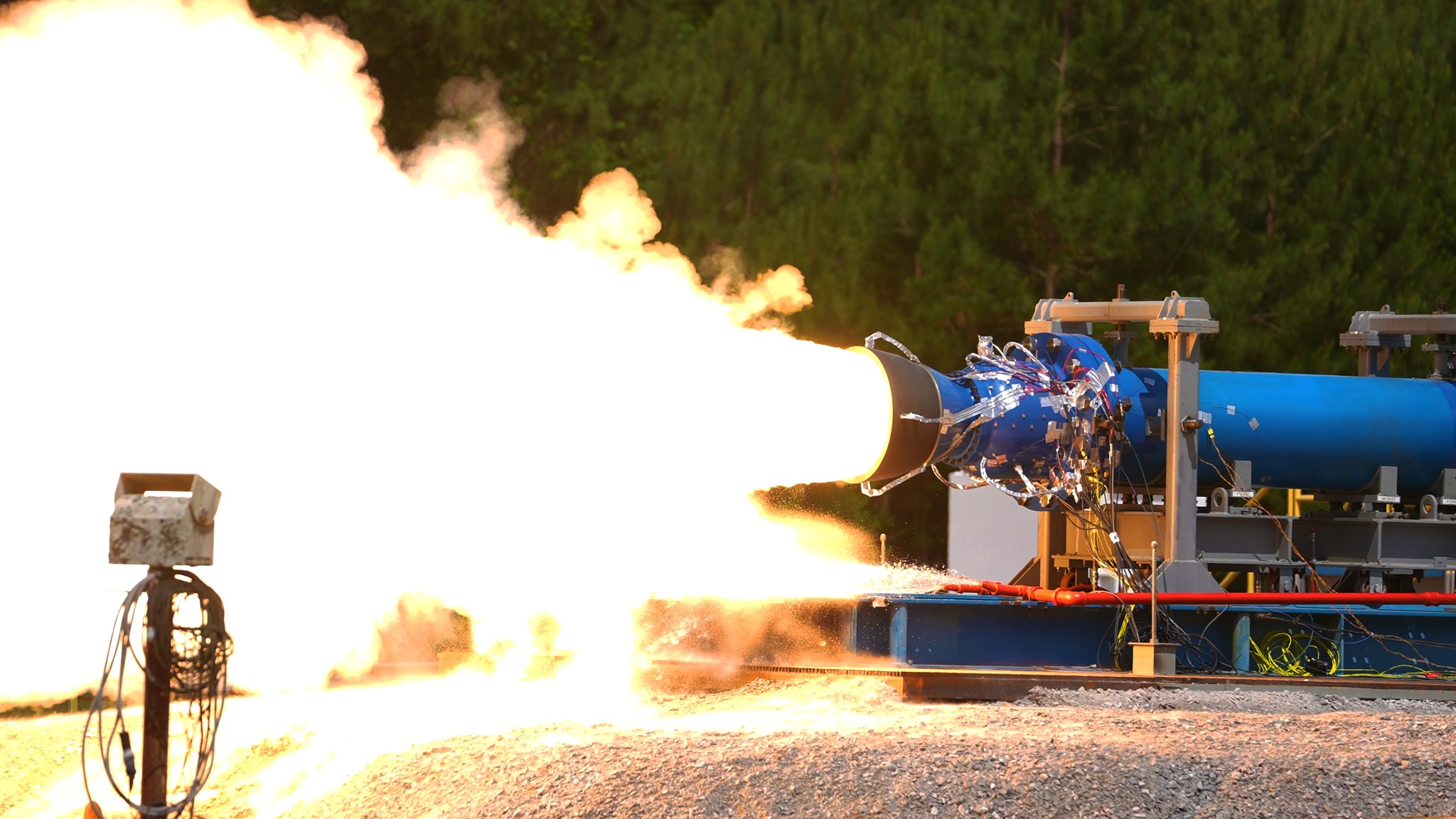Engineers successfully fired a 2-foot-diameter, subscale solid rocket booster June 1, 2022, at NASA’s Marshall Space Flight Center in Huntsville, Alabama. The test, conducted in Marshall’s East Test Area, produced 92,000 pounds of thrust and was done as part of the booster obsolescence and life extension (BOLE) program, providing an upgraded booster design for the evolved configuration of the Space Launch System (SLS) rocket for Artemis IX and beyond. The BOLE booster will be a larger and more powerful solid rocket motor to make the SLS rocket capable of sending heavier payloads to the Moon and beyond.
Credits: NASA/Samuel Lott
The test was the second in the series to evaluate the new motor design with an added half segment, a new propellant, a new aft dome design, and a new nozzle design. The first test was completed Dec. 2, 2021, and produced 76,400 pounds of thrust.
For this second test, lead booster contractor Northrop Grumman used a different propellant than in the first test to put the motor under the maximum expected operating pressure it could experience on launch day. Engineers will use data from the test to analyze how the motor performed under this pressure, which could be reached on a really hot day on the launch pad at NASA’s Kennedy Space Center in Florida.

A third subscale test of the new design, scheduled for next year, will evaluate alternate materials for both the nozzle and insulation for the motor. The subscale motor tests are an important step in learning how the BOLE motor will perform at full-scale. The team is working to complete the final design for a test of the full-scale motor in the spring of 2024 at Northrop Grumman’s test facility in Utah.


























